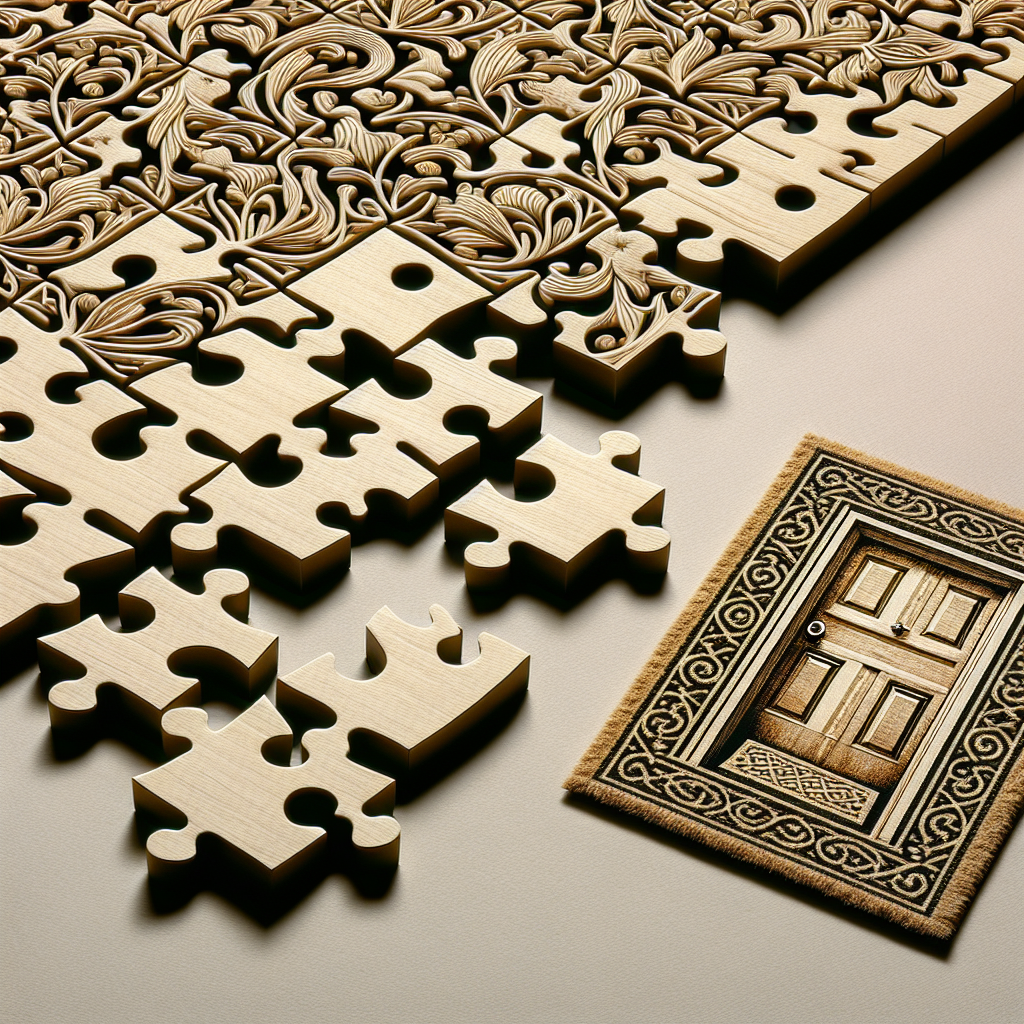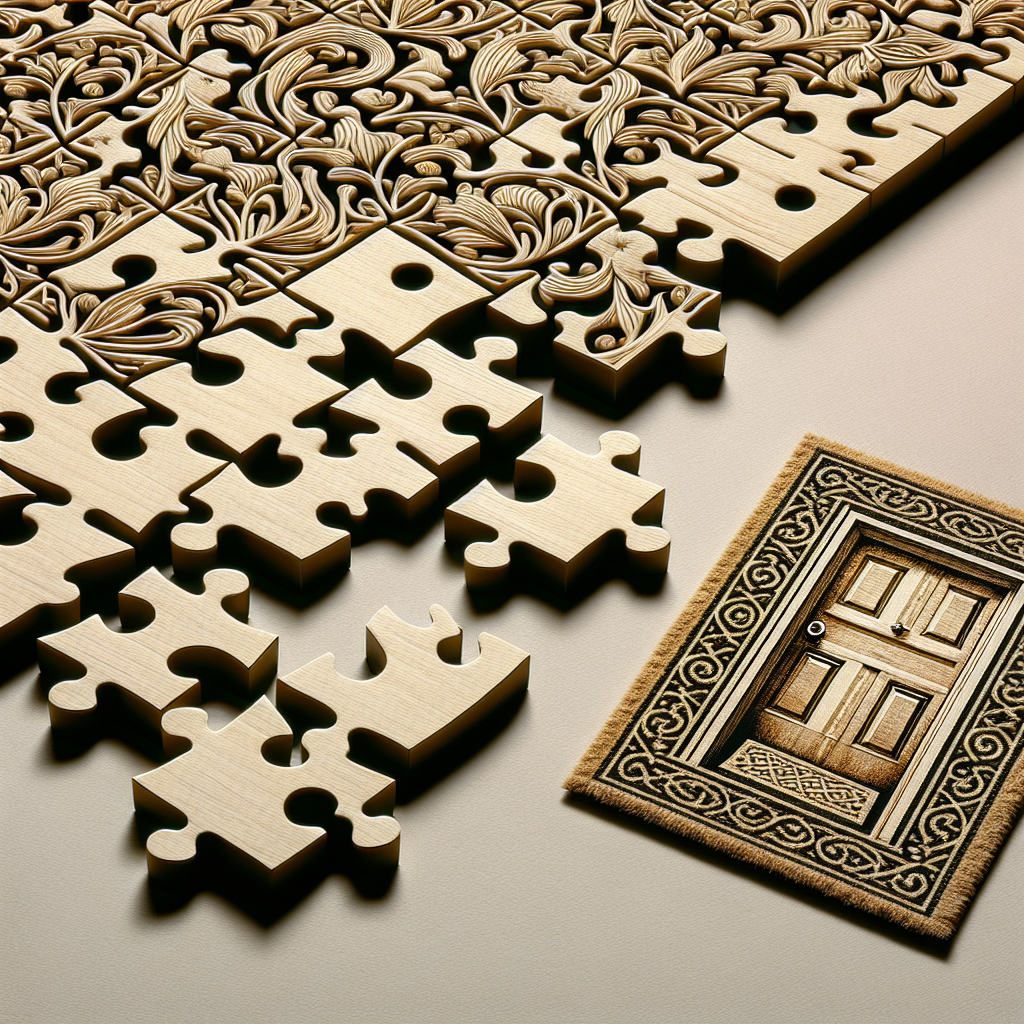Picture this: you’re sitting with a group of friends, a riddle or puzzle in hand, ready to challenge their minds and have a great time. But here’s the catch – you want to ensure that the challenge is not overwhelming, yet still intriguing enough to keep everyone engaged. Finding the right balance between complexity and accessibility when designing puzzles or riddles can be quite the task. In this article, we will explore the art of striking that perfect equilibrium, ensuring that everyone can participate and enjoy the mental acrobatics involved.

Understanding the Audience
When it comes to creating puzzles or riddles, understanding your audience is key. Identifying the target audience will help you tailor your puzzle to their specific skill levels and preferences. By analyzing their skill levels, you can ensure that your puzzle is neither too easy nor too difficult for them to solve.
Identifying the target audience
Before you start designing your puzzle or riddle, it’s important to identify who your target audience is. Are you creating a puzzle for children, adults, or a specific age group? Understanding who will be solving your puzzle will allow you to customize it to their level of comprehension and interests. For example, a puzzle designed for children will need to be simpler and more visually engaging, while a puzzle for adults can afford to be more complex and intellectually stimulating.
Analyzing their skill levels
To create a puzzle that is engaging and challenging without being overwhelming, it’s crucial to analyze the skill levels of your target audience. Consider factors such as their logical reasoning skills, problem-solving abilities, and prior knowledge. This analysis will help you determine the appropriate level of complexity for your puzzle, ensuring that it is neither too easy nor too difficult for your audience to enjoy.
Clarifying the Objective
Once you have a clear understanding of your audience, it’s time to clarify the objective of your puzzle or riddle. Defining the purpose will help you stay focused throughout the design process and ensure that your puzzle serves its intended purpose effectively.
Defining the purpose of the puzzle or riddle
Are you designing a puzzle for entertainment, educational purposes, or both? Defining the purpose will guide your decision-making process and help you create a puzzle that aligns with your objectives. If it’s for entertainment, you may prioritize creating a sense of fun and excitement. If it’s for educational purposes, you might focus on incorporating educational content or reinforcing specific skills.
Identifying the desired outcome
Consider what you want the solver to gain or achieve by solving your puzzle. Do you want them to feel a sense of accomplishment, learn something new, or simply enjoy the satisfaction of solving a challenging puzzle? Clearly identifying the desired outcome will help you shape the puzzle’s structure, difficulty level, and overall experience.
Determining the Level of Complexity
Now that you know your audience and have a clear objective, it’s time to determine the level of complexity for your puzzle. Balancing complexity and accessibility is essential to ensure that your audience is both challenged and engaged.
Considering the target audience’s preferences
Take into account the preferences of your target audience when deciding on the level of complexity. Are they seasoned puzzle enthusiasts who enjoy a significant challenge, or are they beginners who may be discouraged by overly complex puzzles? Striking the right balance will ensure that your puzzle is both stimulating and enjoyable for your audience.
Balancing difficulty and engagement
While it’s important to create a puzzle that is challenging, it’s equally crucial to maintain engagement throughout the solving process. If a puzzle is too easy, it may quickly become boring, while a puzzle that is too difficult may lead to frustration and disinterest. Strive to find the sweet spot where the puzzle is challenging but still solvable, keeping your audience engaged and motivated to solve it.
Creating a Logical Flow
For a puzzle or riddle to be enjoyable and solvable, it needs to have a logical flow. Establishing a clear starting point and developing a coherent progression will guide the solver’s thought process and make the puzzle more intuitive to solve.
Establishing a clear starting point
Every puzzle needs a clear starting point to give the solver a sense of direction. This starting point can be an initial clue, a prompt, or a visual cue that triggers the solver’s problem-solving instincts. By providing a well-defined starting point, you set the stage for the solver’s journey through the puzzle.
Developing a coherent progression
As the solver progresses through the puzzle, it’s important to maintain a coherent and logical sequence of challenges. Each step should build upon the previous one, gradually increasing in complexity and leading towards the solution. This progression ensures that the solver feels a sense of accomplishment as they approach the final answer.
Providing Clues and Hints
Clues and hints play a crucial role in guiding the solver towards the solution. Depending on the difficulty level and the audience’s experience, providing clues may be necessary to prevent frustration and maintain engagement.
Determining the necessity for clues
Consider the difficulty level of your puzzle and the skill levels of your audience when deciding whether to provide clues. While some solvers may enjoy the challenge of solving a puzzle without any assistance, others may require additional guidance to stay motivated. Providing well-timed and well-crafted clues can enhance the solver’s experience and prevent them from feeling stuck or overwhelmed.
Strategically delivering hints
If you decide to include clues or hints, it’s important to strategically deliver them. Consider the timing and placement of the hints to ensure that they are meaningful and provide valuable insights without giving away the solution too easily. Gradually increasing the level of assistance can help maintain the solver’s engagement while still challenging their problem-solving skills.
Testing and Iterating
To create a successful puzzle or riddle, thorough testing and iteration are essential. This process allows you to gather valuable feedback and make improvements to enhance the solver’s experience.
Conducting prototype testing
Before finalizing your puzzle, it’s crucial to conduct prototype testing with a diverse group of individuals who represent your target audience. Their feedback will help you identify any potential issues, gauge the difficulty level, and ensure that the puzzle is enjoyable and solvable.
Gathering feedback for improvements
Actively seek feedback from the testers and be open to suggestions for improvement. Pay attention to their comments, observe their problem-solving process, and note any areas where they encounter difficulties or confusion. Incorporating this feedback into your puzzle design will help you refine and optimize the experience for your audience.
Utilizing Multiple Layers
Incorporating multiple layers of complexity in your puzzle design can cater to a wider range of audiences. By offering different levels of difficulty, you ensure that both beginners and experienced solvers can enjoy the challenge.
Incorporating different levels of difficulty
Consider creating different versions or variations of your puzzle to accommodate various skill levels. This could involve offering easy, medium, and hard versions of the same puzzle, each tailored to a different audience segment. By providing options, you allow solvers to choose the level of challenge that suits them best.
Ensuring accessibility in each layer
While incorporating multiple layers of complexity, it’s important to ensure that each layer remains accessible and solvable. Avoid creating overly drastic jumps in difficulty between different versions of the puzzle, as this could exclude certain segments of your target audience. Each layer should provide a logical progression from the previous one, allowing solvers to gradually build their skills and confidence.
Maintaining Engagement
To keep solvers immersed and motivated, it’s crucial to maintain engagement throughout the puzzle-solving process. Incorporating variety in puzzle elements and creating a sense of accomplishment can help achieve this.
Incorporating variety in puzzle elements
To keep solvers engaged, incorporate a variety of puzzle elements into your design. This can include visual puzzles, wordplay, riddles, or interactive components that require physical manipulation. By offering different types of challenges, you cater to a wider range of preferences and keep the experience fresh and engaging.
Creating a sense of accomplishment
It’s important to design your puzzle in a way that gives solvers a sense of accomplishment when they solve it. This can be achieved by incorporating clear milestones, such as mini-puzzles or incremental achievements, along the way. Celebrating these milestones and providing positive reinforcement can enhance the overall experience and make solving the puzzle even more rewarding.
Considering Limitations
When designing puzzles or riddles, it’s essential to consider any limitations that your audience may have. Avoiding overly complex concepts and ensuring accessibility for individuals with different sensory capabilities will make your puzzle more inclusive and enjoyable for a wider audience.
Avoiding overly complex concepts
While it’s important to challenge your audience, it’s crucial to strike a balance and avoid overwhelming them with overly complex concepts. Consider the background knowledge and experience of your target audience, and aim to create puzzles that are within their grasp. This way, you ensure that your puzzle remains engaging and solvable for a broader range of solvers.
Designing for different sensory capabilities
Accessibility is a key consideration when designing puzzles or riddles. Take into account individuals with different sensory capabilities, such as visual impairments or hearing impairments. Ensure that your puzzle can be solved using multiple senses or provide alternative formats for individuals with specific needs. Making your puzzle inclusive and accessible will allow a wider range of individuals to enjoy and solve it.
Seeking Feedback
To create the best possible puzzle or riddle, it’s important to seek feedback from a diverse group of individuals. Gathering input from different perspectives will help you identify potential blind spots and make improvements to enhance the overall experience.
Gathering input from a diverse group
When seeking feedback, make an effort to involve individuals from various backgrounds, age groups, and skill levels. Their unique perspectives will help you gain a comprehensive understanding of how different audiences may experience your puzzle. Pay attention to their thoughts, suggestions, and areas where they encounter challenges or confusion. This feedback will be invaluable in refining your puzzle design.
Considering different perspectives
While receiving feedback, it’s essential to approach it with an open mind and consider different perspectives. Each individual may have a unique approach or interpretation of your puzzle, and their input can offer valuable insights. Be willing to iterate and make changes based on this feedback to create a puzzle that is engaging and enjoyable for a wide range of solvers.
Balancing complexity and accessibility when designing puzzles or riddles is a challenging yet rewarding endeavor. By understanding your audience, clarifying the objective, determining the level of complexity, creating a logical flow, providing clues and hints, testing and iterating, utilizing multiple layers, maintaining engagement, considering limitations, and seeking feedback, you can create puzzles and riddles that captivate and challenge solvers while ensuring accessibility for all. So put your creativity to the test and start designing that next mind-bending puzzle that will leave your audience both puzzled and delighted.
